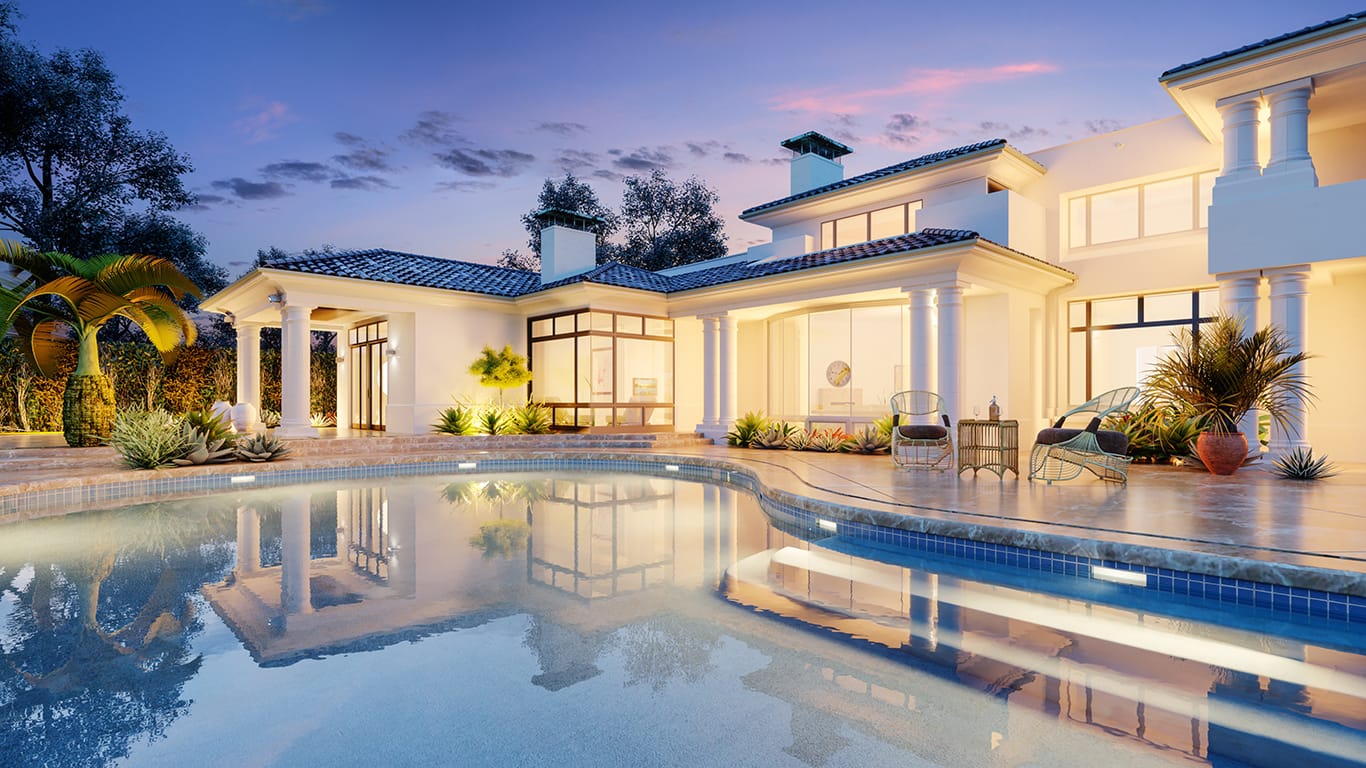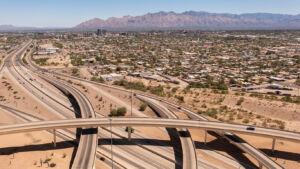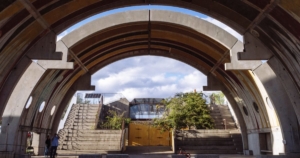Arizona has become one of the most powerful stories in modern American real estate. Once dismissed as a retirement state or a desert escape, it now stands among the nation’s elite when it comes to luxury living, architectural design, and wealth migration. Scottsdale, in particular, has evolved into a national benchmark for luxury development, balancing desert modernism, wellness, and long-term value.
This shift mirrors broader national trends. Across the U.S., buyers are no longer chasing luxury for image alone — they’re investing in cities where design, lifestyle, and economic fundamentals intersect. The next generation of luxury buyers wants more than marble countertops and skyline views; they want climate resilience, sustainable architecture, tax efficiency, and communities that support both culture and capital growth.
From the serene waters of Lake Las Vegas to the glass-lined estates of Silverleaf and the smart homes of Austin’s Hill Country, a new hierarchy of markets is emerging. The following cities — led by Las Vegas and Scottsdale — are redefining what it means to live, invest, and thrive in America’s most desirable luxury enclaves.
1. Las Vegas, Nevada — Architectural Innovation in the Desert
Las Vegas has transcended its “Entertainment Capital” label to become one of the country’s most forward-thinking design and investment hubs. The same city once defined by neon and nightlife is now known for architectural innovation and sustainable luxury, particularly in master-planned enclaves that merge modern architecture with desert ecology.
At the forefront is Blue Heron Lake Las Vegas, a community that epitomizes “desert modernism.” Homes feature seamless indoor-outdoor integration, solar-ready infrastructure, water-smart landscaping, and clean-line aesthetics that blend effortlessly with the surrounding topography. Beyond the visual appeal, Blue Heron has elevated the conversation about what desert living can be — sustainable, tranquil, and globally competitive in design quality.
Nevada’s lack of state income tax, favorable business climate, and lower cost of entry compared to California continue to drive high-net-worth migration. The region’s real estate now reflects both lifestyle luxury and financial intelligence — a duality that makes it one of the strongest long-term growth markets in the West.
Market Highlights:
- Median luxury sale price ≈ $1.1 million, up 6.2% year-over-year.
- 65%+ of new high-end developments include solar or desert-adaptive systems.
- Inbound luxury buyer migration from California has increased 30% since 2022.
LOCAL NEWS: 10 things you may not know are manufactured in Arizona
INDUSTRY INSIGHTS: Want more news like this? Get our free newsletter here
2. Scottsdale, Arizona — Desert Luxury With Global Appeal
Scottsdale is no longer just Arizona’s luxury capital — it’s one of America’s defining models of upscale desert living. Once known primarily for golf courses and resort spas, the city has matured into a powerhouse market that attracts investors, executives, and creative professionals alike. Its rise has been fueled by the region’s economic strength, year-round livability, and the state’s tax advantages compared to coastal competitors.
In 2025, Scottsdale’s median home price reached roughly $831,000, while homes above $1 million saw nearly 58% year-over-year growth. Flagship communities like Silverleaf and Desert Mountain have become internationally recognized for their blend of privacy, sustainability, and modern architecture — with Silverleaf alone averaging $5.5 million per sale, placing it among the most exclusive ZIP codes in the American Southwest.
Scottsdale also benefits from macroeconomic forces: its millionaire population grew 125% between 2014 and 2024, driven by relocations from California, Illinois, and New York. With Arizona’s robust employment base in healthcare, technology, and hospitality, demand for high-end residences continues to outpace supply. This rare mix of lifestyle, fiscal policy, and urban sophistication makes Scottsdale a long-term winner.
Market Highlights:
- Median home price ≈ $831K; $1M+ transactions up 57.7% YoY.
- Silverleaf average sale ≈ $5.5M, one of Arizona’s top luxury ZIPs.
- 125% growth in millionaire households over the past decade.
3. Austin, Texas — Where Creativity Fuels Real Estate
Austin exemplifies the new generation of “creative capital” cities — where innovation drives both lifestyle and property values. Once a laid-back college town, Austin is now an economic powerhouse attracting top talent from Silicon Valley and beyond. With Tesla, Oracle, and Google expanding major campuses, the city’s luxury real estate market has exploded to accommodate tech founders, executives, and investors seeking cultural vibrancy and capital growth.
Austin’s architecture mirrors its creative energy: sleek downtown condos with skyline views, Hill Country estates designed around natural landscapes, and LEED-certified builds that merge technology with sustainability. Many properties integrate AI-assisted energy systems, EV-charging garages, and smart security networks — a reflection of the city’s tech DNA. As population growth continues (35% since 2010), so does demand for high-end housing that matches Austin’s global reputation for innovation.
Market Highlights:
- Median home price ≈ $595K, luxury tier up 5% YoY.
- 70% of new homes feature smart-tech energy integration.
- AEGB-certified homes resell 6–10% higher than standard builds.
4. Denver, Colorado — Elevated Living Meets Long-Term Value
Denver has become a national model for mountain modernism, balancing sustainability, culture, and investment stability. The metro’s growth is anchored by a diverse economy spanning tech, energy, and aerospace — sectors that attract affluent professionals seeking proximity to both business and recreation.
Luxury homes in Cherry Creek, Highlands, and Boulder combine natural materials — wood, steel, stone, and glass — with expansive windows framing Rocky Mountain views. Developers are also embracing net-zero-ready construction, geothermal heating, and passive solar design. These features not only align with Colorado’s environmental ethos but also reduce ownership costs, bolstering property value over time.
With limited land availability near mountain corridors and year-round demand from outdoor-oriented buyers, Denver continues to demonstrate how lifestyle markets can become long-term investment havens.
Market Highlights:
- Median single-family price ≈ $670K, up 5.9% YoY.
- 65%+ of new builds are solar or geothermal equipped.
- Typical energy savings per home: $1,500–$2,000 annually.
5. Nashville, Tennessee — Music City Matures Into a Luxury Market
Nashville has outgrown its reputation as a music hub and redefined itself as a Southern capital of affluence and innovation. Its luxury housing surge mirrors its transformation into one of America’s fastest-growing economies, where entertainment, healthcare, and technology overlap.
Downtown’s skyline is now dotted with luxury towers offering concierge services, wellness clubs, and private lounges, while nearby enclaves like Brentwood and Franklin showcase Southern estates infused with modern design. The influx of high-income residents — entertainers, entrepreneurs, and executives — continues to fuel property values. With median luxury prices still below coastal equivalents, Nashville offers unmatched entry value among major cultural markets.
Market Highlights:
- $1M+ home sales up 40%+ since 2021.
- Median luxury condo price ≈ $975K, with steady 9–10% annual appreciation.
- Population growth averaging 2% annually across metro counties.
6. Raleigh-Durham, North Carolina — Tech Roots and Timeless Living
Few regions combine innovation and livability as effectively as North Carolina’s Research Triangle. Raleigh-Durham has evolved from academic corridor to economic engine, home to hundreds of tech, biotech, and research firms. That foundation has created a booming real estate market, where luxury homes reflect a balance of traditional Southern architecture and cutting-edge convenience.
Buyers are drawn to large, tree-lined lots, modern floorplans, and proximity to top universities. The region’s affordability relative to other tech centers offers significant upside, while the strong rental market makes high-end property ownership appealing to investors. Raleigh-Durham proves that heritage and high-tech can coexist, making it one of the most stable long-term markets in the country.
Market Highlights:
- Median home price ≈ $540K, up 4.3% YoY.
- Tech employment +18% since 2020.
- 5-year average appreciation ≈ 8% annually.
7. Portland, Oregon — Sustainable Luxury for a New Generation
Portland has earned a national reputation for values-driven living, where sustainability and design converge into a unique form of modern luxury. The city’s upscale housing market is defined by LEED-certified homes, solar installations, and developments that prioritize walkability, green space, and community engagement.
For investors, the appeal lies in alignment with long-term trends. Eco-certified properties here not only sell faster but also maintain stronger resale performance, typically commanding 6–9% higher values than non-certified peers. Portland’s ability to marry lifestyle integrity with financial performance makes it a compelling alternative to high-cost West Coast metros like San Francisco and Seattle.
Market Highlights:
- Median luxury home ≈ $975K, up 3.7% YoY.
- 50%+ of new units carry LEED or equivalent certifications.
- 9% resale premium on sustainable homes across metro areas.
Conclusion — Scottsdale and the New Geography of American Luxury
From Blue Heron’s desert modernism in Las Vegas to Silverleaf’s elevated exclusivity in Scottsdale, a new luxury landscape is taking shape across America. These markets share a common thread: they combine beauty, innovation, and economic logic — the essential ingredients for lasting real estate value.
From Turnberry Place condos for sale to Nashville’s creative energy and Portland’s sustainable focus, luxury real estate in America is evolving into a balanced equation of lifestyle and long-term value.
- Las Vegas leads in architectural innovation and tax-friendly growth.
- Scottsdale defines desert elegance, fiscal stability, and sustained wealth migration.
- Austin, Denver, and Nashville merge cultural identity with rising property performance.
- Raleigh-Durham, Portland, and Salt Lake City illustrate how emerging markets can deliver both lifestyle depth and steady ROI.
For developers, investors, and real estate professionals — the lesson is clear: the next decade of American luxury will belong not to legacy coastal enclaves, but to cities that build intelligently, live beautifully, and compound wealth sustainably.
And few embody that future more than Scottsdale, Arizona — a desert city now standing shoulder-to-shoulder with the world’s most desirable addresses, proving that luxury and long-term investment can thrive under the same sun.




